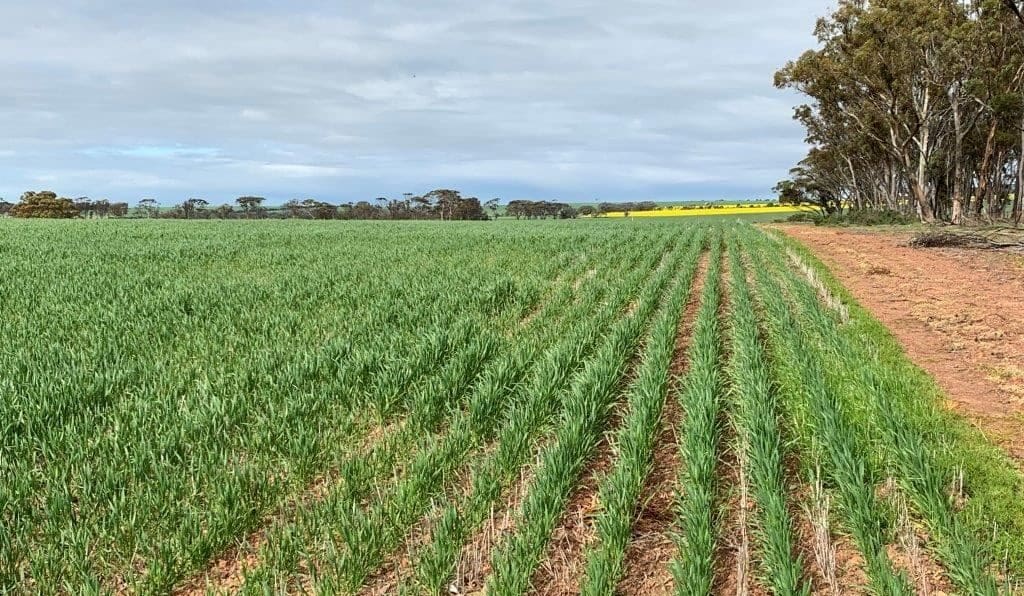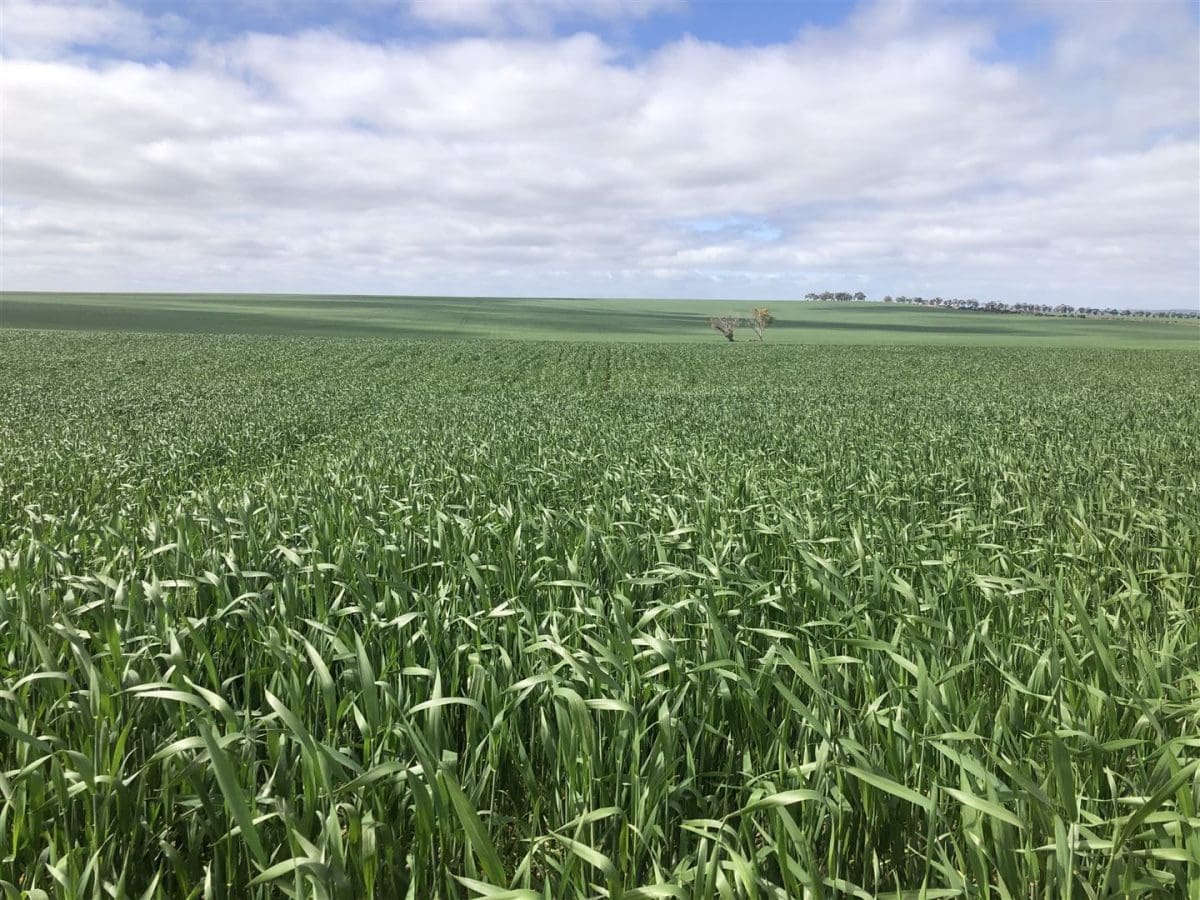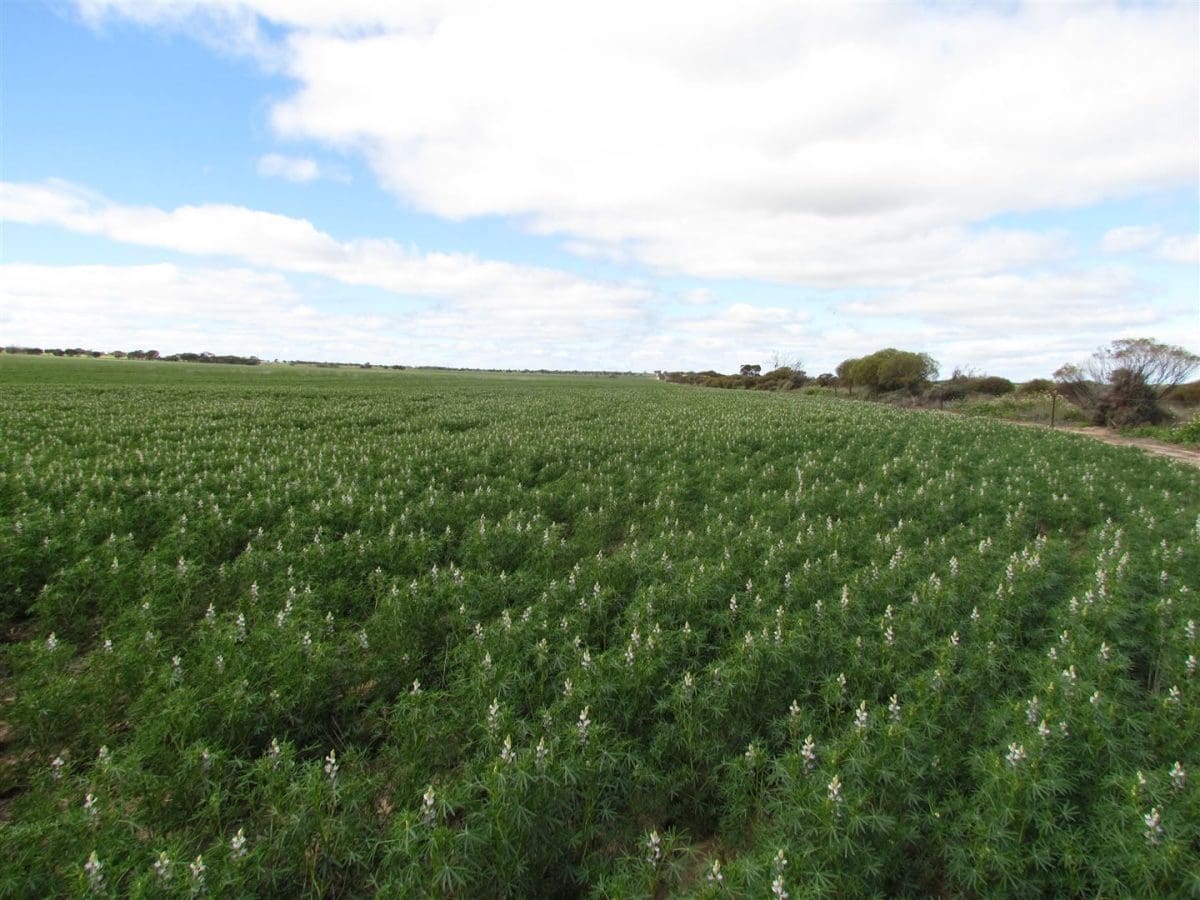
Bellrock at Jubuk sold locally for $7.1 million. Photo: Nutrien Harcourts Narrogin
VALUES of Western Australian farmland have risen faster than those of any other state, but the rise has done little to dampen the local appetite for further area.
While corporate buying has slowed considerably, a number of family farms are expanding their footprint as WA growers enjoy solid global demand for their main crops: canola, lupins, oats, malting barley and wheat.
According to the Rural Bank Australian Farmland Values report released in May, WA farmland values increased 36.3 per cent over 2021, compared with the national increase of 20pc, and a 31.3pc rise in Queensland in second place for median price growth.
WA agents report some farm owners are seeing the appeal of selling up and depositing their lump sum now that interest rates are up, but many are still happy to lease and get a return on investment of 3-3.5pc.
Call for quality
Some vendors are happy to consider lease or sale, and that includes the owners of Gundills, a 1278-hectare property of nearly all arable country located 25 kilometres south of Mingenew at Arrino in the Geraldton zone.
Nutrien Harcourts agent Yves Beagley has the Gundills listings, and said its vendors were investigating their options as part of their broader family-farming operation.
“Land is tightly held around Mingenew, and Gundills is not big enough for a standalone, but it could be a satellite for an operation within 50km,” Mr Beagley said.
Gundills is mostly strong to medium yellow sandplain, and has had an extensive liming and spading program as well as deep ripping in recent years to benefit its long-term wheat-lupin rotation.
Investment in Gundills’ soils by the current owners, plus its location and improvements, are among the block’s key attributes.
“There’s not a farm that doesn’t come without some second-class soils, and people are aware of the costs of amelioration to bring it up to that better standard.”

Cereal crops at Gundills at Arrino are among most in the state on track for above-average yields. Photo: Nutrien Harcourts
Nutrien Harcourts Midwest agent Brad King said soils were as or more important than rainfall in some cases in determining the value of farmland to bidders.
Quality improvements are also front of mind because of the high cost of materials to build infrastructure, and tightness in the labour market.
“Demand has probably come off a bit for the property’s that are going to need some investment; costs are just nuts,” Mr King said.
Mixed view on leasing
Capital growth in properties means the return on investment landowners are seeking from lessees has fallen from 4 per cent plus several years ago.
“If you can get more than that, good on you; it’s unusual for people to get more than 3.5pc now.”
With interest rates on the rise, Mr King said some that owned farms to lease were running the ruler over selling up now that term deposits were offering comparable returns.
“That’s been in the past 12-18 months.”
Mr King said a few years ago, growers would lease rather than sell if they wanted to get out of farming.
“Now they might take their money and reinvest elsewhere.”
“I think they’re more likely to sell now because the returns on investment and term deposits are similar.”
Leasing can also provide a break for people who want to buy themselves some time after producing two bumper crops with another one coming, and doing it amid WA’s tough border restrictions during COVID.
“We’re coming off two or three particularly busy years, and they don’t come without a toll in people,” Mr Beagley said.
“Some are looking for a couple of quiet years through leasing and then taking it back as their priorities change.”
Big yields also come at a cost to country, and Mr Beagley said additional expenditure on inputs was therefore required ahead of planting 2023 in most cases.
It’s a fact that does not escape prospective buyers.
“We’ve had a run of pretty good years in the northern agricultural district, and there will need to be replenishment of soils.”
Commodity prices a buffer
Mr King said overall demand for quality farmland to buy or lease was high, with strong WA seasons and historically high commodity prices helping to offset high input costs.
“If compound fertiliser is $1600-$1700 a tonne, the lease fee might be $250-$300/ha plus $800/ha to grow the crop.
“That means you need $1200/ha to cover your costs, and you have to grow 3t/ha at $400/t for that.”
Yields and prices have been well above that in all but WA’s lowest-rainfall areas, and even those are expecting bumper yields this year.
Provided late frost doesn’t cruel yield potential, WA is set up for its third bumper year in a row, and Mr Beagley and Mr King said the run of seasons cannot be expected to continue indefinitely.
“People are a little bit circumspect,” Mr King said.
However, few places are lingering on the books, and most of the buyers are local.
“Everything we have listed we have sold.
“It’s pretty well all local — farmer to farmer.”
Mr Beagley said well-maintained properties were having no trouble attracting buyers.
“The market’s strong, as is the whole rural market,” he said.
“There’s enough demand that places of quality aren’t hanging around.”
Gains yet to stop
Mr Beagley said higher interest rates might be tempering the demand of prospective buyers with more exposure to borrowings.
“Probably interest rates and costs of inputs are weighing on buyers with lower equity.”
Nonetheless, prices keep marching north.
“We’ve bounced three years in a row, and I would think we’re above 40pc up on where we were before that,” Mr King said.
His sentiments were echoed by Mr Beagley.
“Properties we sold two years ago we thought wouldn’t get much capital growth before 4-5 years; they’ve had considerable growth.
“Properties you’d thought would sell for $2000 an acre are going for $3000 in some cases.”
Muggawa, 25km south of Mingenew, was listed with Mr Beagley and offered by a farming family based around 40 kilometres from the property.
It sold to a local interest for around $6000 per arable hectare and covers 1060ha, with 743ha deemed arable.
“That was in line with expectations, and it was a satellite property the owners had had for about 10 years.”
At Jubuk, 24km west of Corrigin, the 1970ha Bellrock sold for $7.1M last month, or $3604/ha.
It listed with Nutrien Harcourts Narrogin agent Steve Wright, who reports Bellrock sold to a “local farmer in expansion mode,” and will settle in January after harvest.
Mr Wright also has the 1777ha Ben Lomond at Yealering, between Corrigin and Narrogin, listed for $8.9M.
Mr King recently listed the 1696ha Maranmya Farm at Burakin for sale through an expressions-of-interest campaign which closed September 13, and it is now under offer from a local interest.

Lupins are part of the rotation at Maranmya Farm, Burakin, which is under offer after a short time on the market. Photo: Nutrien Harcourts
Maranmya Farm features 1538ha of arable country and is under a cereal, lupin and grazing rotation.
“That part of the world’s been a little untapped, and it’s been under lease for about 10 years,” Mr King said.
At Marchagee between Perth and Geraldton, Mr King recently sold the 2108ha Teejay Farm, a mixed-farming operation with good improvements which has set a new high high for the district.
“It’s certainly bounced from the last farm, which was just short of $4000/ha; this was $5000/ha including infrastructure.”
Mr King said strong livestock prices were also contributing to the growth in value of mixed-farming operations.
Grain Central: Get our free news straight to your inbox – Click here

HAVE YOUR SAY